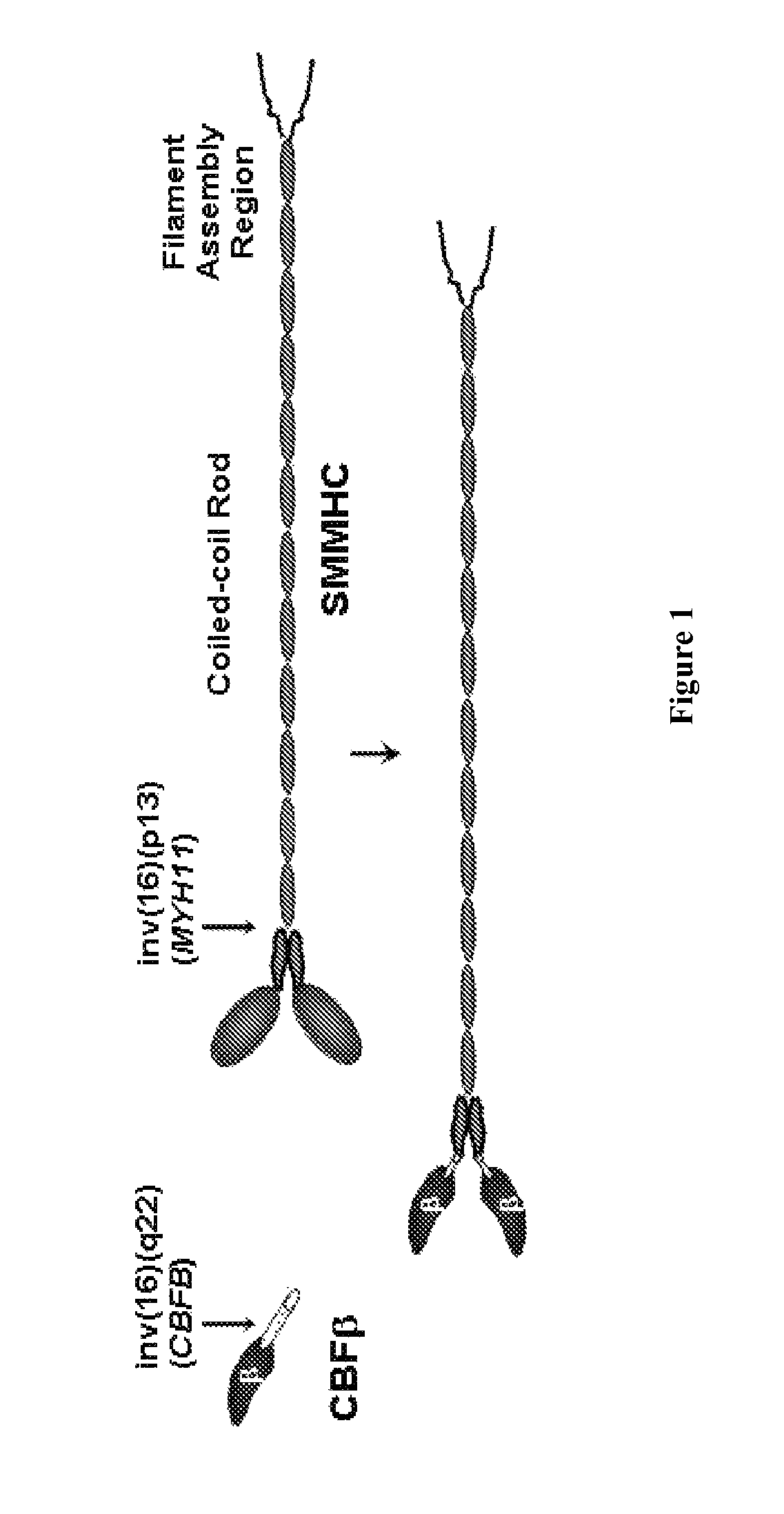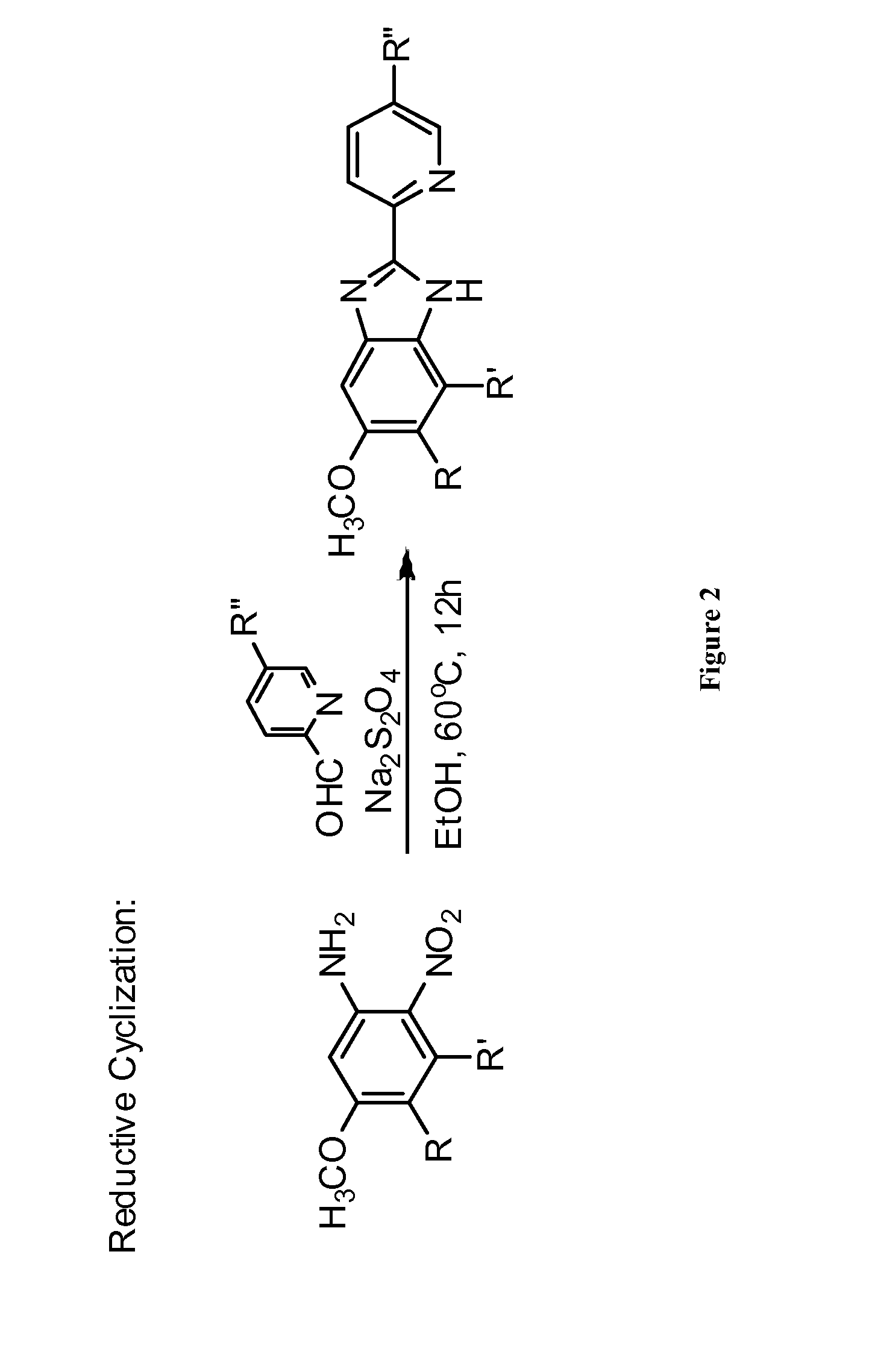Inhibitors of inv(16) leukemia
a technology of inv (16) and leukemia, which is applied in the field of inv (16) leukemia inhibitors, can solve the problems of insufficient leukemia-causing cbfb, limited structural characterization, and significant defects in hematopoietic compartment alteration of cbfb dosage, and achieves the effects of increasing the potency of inv(16) cell lines, increasing the apoptosis of cell lines, and little
- Summary
- Abstract
- Description
- Claims
- Application Information
AI Technical Summary
Benefits of technology
Problems solved by technology
Method used
Image
Examples
embodiments
[0304]The present invention provides compositions and methods useful for inhibiting inv(16) leukemia cell proliferation and for increasing apoptosis in inv(16) leukemia cells. The method encompasses directly inhibiting protein-protein interactions.
[0305]The compositions include known and new compounds useful for practicing the methods of the invention, as well as methods for making the compounds. Techniques for preparing analogs, derivatives, and modifications of the generic structures of the invention are known in the art or described herein. Some examples of diseases which may be treated according to the methods of the invention are discussed herein or are known in the art. The present invention further provides methods for testing compounds of the invention. Other methods for testing compounds discovered using the methods of the invention are either described herein or are known in the art.
[0306]In cases where compounds are sufficiently basic or acidic to form acid or base salts,...
examples
[0331]FRET assay. We have developed effective assays to monitor the inhibition of CBFβ-SMMHC binding to the Runt domain (as well as for CBFβ binding to the Runt domain). We fused the green fluorescent protein derivative Cerulean to the N-terminus of the Runt domain and the green fluorescent protein derivative Venus to the N-terminus of CBFβ-SMMHC (as well as to CBFβ (Gorczynski, Grembecka et al. 2007)). The ratio of the emission intensities at 525 nm and 474 nm, measured after excitation at 433 nm, was used as the readout in this assay. The dynamic range for the FRET assay was determined by adding a 30-fold excess of untagged CBFβ-SMMHC (or CBFβ in the case of CBFβ—Runt domain binding) to the assay and the associated change in the FRET ratio was defined as 100% inhibition. We have validated the CBFβ-SMMHC—Runt domain assay by determining the Kd for binding using serial dilution resulting in a Kd value of 15 nM, in good agreement with the Kd value of 6 nM obtained from calorimetric m...
PUM
| Property | Measurement | Unit |
|---|---|---|
| pH | aaaaa | aaaaa |
| mole fraction | aaaaa | aaaaa |
| mole fraction | aaaaa | aaaaa |
Abstract
Description
Claims
Application Information
 Login to View More
Login to View More - R&D
- Intellectual Property
- Life Sciences
- Materials
- Tech Scout
- Unparalleled Data Quality
- Higher Quality Content
- 60% Fewer Hallucinations
Browse by: Latest US Patents, China's latest patents, Technical Efficacy Thesaurus, Application Domain, Technology Topic, Popular Technical Reports.
© 2025 PatSnap. All rights reserved.Legal|Privacy policy|Modern Slavery Act Transparency Statement|Sitemap|About US| Contact US: help@patsnap.com



